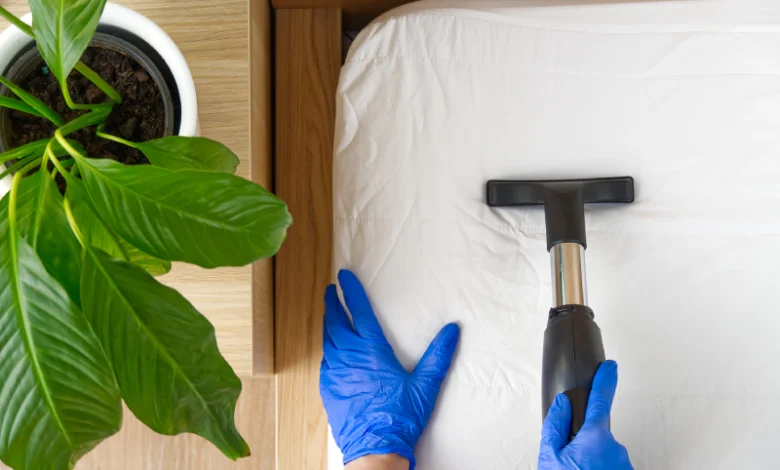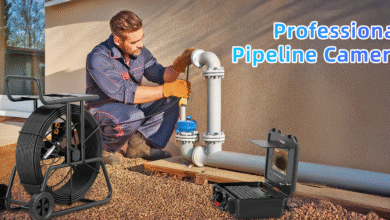Cleaning for Allergy Relief: What Your Home Needs This Season

Allergy season doesn’t stop at your front door. While the outdoors are often blamed for sneezing, watery eyes, and runny noses, your home could be the real trigger behind those lingering symptoms. Dust, pollen, mold, pet dander, and other allergens don’t need much space to thrive—and without the right cleaning strategies, they settle deep into your environment.
If you’ve been relying on surface-level cleaning to keep your home fresh, it’s time to think differently. Especially during spring and fall transitions, a focused cleaning routine is essential to clear the air—literally—and keep allergens under control.
In this guide, we’ll walk through the rooms, materials, and overlooked spaces in your home that can either trigger or relieve allergies. Whether you manage your home on your own or use professional cleaning services, knowing what to target each season makes a measurable difference in comfort and wellness.
Why Allergens Linger Indoors
Even if you keep your windows shut and shoes by the door, allergens still find ways to invade. Dust mites live in mattresses, pet dander floats invisibly, and mold spores can form in damp areas before you ever see them.
As air circulates through your HVAC system, these particles are pushed into every corner of your home. Without regular, focused cleaning, they collect on rugs, curtains, and furniture—causing symptoms to persist long after allergy season is over.
That’s where a deeper, allergy-conscious cleaning strategy comes in.
Bedroom: Where Dust Mites Rule
Your bed is supposed to be your safe zone. But it’s often the number-one source of indoor allergens. Dust mites thrive in warm, humid environments like pillows, mattresses, and bedding.
What to focus on:
- Wash all sheets, pillowcases, and blankets weekly in hot water.
- Use allergen-proof covers on pillows and mattresses.
- Vacuum under the bed and behind furniture where dust collects.
- Don’t forget curtains—these act like filters for airborne particles and should be cleaned or washed seasonally.
A thorough bedroom refresh using these techniques can lead to noticeably better sleep and reduced morning congestion.
Living Room: Soft Surfaces, Hidden Irritants
From upholstered sofas to thick area rugs, the living room is full of materials that trap allergens. Vacuuming alone isn’t always enough, especially if filters aren’t equipped to capture fine particles.
To reduce allergens:
- Steam clean or shampoo carpets and rugs regularly.
- Wipe down hard surfaces with damp microfiber cloths to trap, not spread, dust.
- Clean between and underneath couch cushions—food particles and pet hair often settle there.
- Replace HVAC filters on schedule and dust ceiling fans, which redistribute airborne allergens if left neglected.
This is where hiring professional house cleaning services can help fill in the gaps. Teams trained in allergen control understand the importance of addressing buildup where it’s least visible.
Bathroom: Moisture’s Best Friend
Where there’s moisture, there’s the potential for mold—and bathrooms are prime territory.
Areas to monitor closely:
- Grout lines and tile seams around the shower or tub.
- The base of toilets and the underside of sink fixtures.
- Shower curtains and liners, which often develop mold even before discoloration appears.
- Bathroom vents and fans, which can circulate spores if not cleaned.
Routine disinfecting with mold-fighting solutions helps, but prevention matters too. Using exhaust fans during and after showers and drying surfaces daily will make a noticeable impact.
Kitchen: The Invisible Layer of Grime
Cooking and cleaning don’t always go hand-in-hand. Between food particles, grease buildup, and moisture from boiling water or dishwashing, your kitchen can quietly support mold and bacteria.
What to do regularly:
- Clean under and behind appliances—especially the refrigerator and stove.
- Wipe down cabinets, particularly around handles and edges.
- Sanitize your trash bin and the area around it, where particles often collect.
- Scrub sink drains and garbage disposals to eliminate mold-friendly moisture zones.
Emerald Cleaning and similar cleaning services often approach kitchens with a checklist that goes well beyond visible messes—addressing buildup before it turns into a health issue.
Entry Points: Where Outdoor Allergens Sneak In
The areas closest to your home’s entrances tend to trap allergens from outside. That includes not just floors, but walls, furniture, and even air.
Steps to minimize contamination:
- Place washable doormats inside and outside each entrance.
- Vacuum entryway rugs frequently with HEPA-filter vacuums.
- Wipe down door frames and baseboards near entrances—these collect dust from high-traffic areas.
- Clean window sills and screens, especially in spring and fall when pollen counts spike.
Bonus Zone: Your HVAC System
While not part of your daily cleaning routine, your home’s heating and cooling system deserves attention when managing allergies.
Every time air flows through your home, it carries whatever particles were left behind—dust, dander, pollen, even cleaning chemicals. A poorly maintained HVAC system will continue circulating those irritants until addressed.
Important seasonal tasks include:
- Changing filters every 1–3 months (or more often during allergy seasons).
- Scheduling duct cleaning if dust buildup is noticeable around vents.
- Vacuuming return air grilles and surrounding walls to prevent residue spread.
When to Consider Help
For many homeowners, managing allergen control means staying ahead of the dust with frequent wipe-downs and vacuuming. But seasonal shifts and deeper needs often call for something more structured.
That’s where professional cleaning services come in—not just to scrub surfaces, but to approach cleaning with strategy and consistency. Whether it’s seasonal deep cleaning or ongoing house cleaning services, a trained team knows how to target allergy hotspots that go unnoticed in daily routines.
Even move out cleaning can benefit from allergen reduction—ensuring the next space you enter doesn’t bring leftover irritants with you.
Final Thoughts
A home doesn’t have to look messy to trigger allergies. Sometimes, the cleanest-looking space can harbor the most invisible irritants. Dust doesn’t ask for permission, and mold won’t wait for you to notice it.
Focusing your cleaning efforts on specific zones—especially during seasonal transitions—can reduce allergy symptoms dramatically. And when you pair good habits with smart support from experienced teams like Emerald Cleaning, you’re not just cleaning your home. You’re clearing the air.




